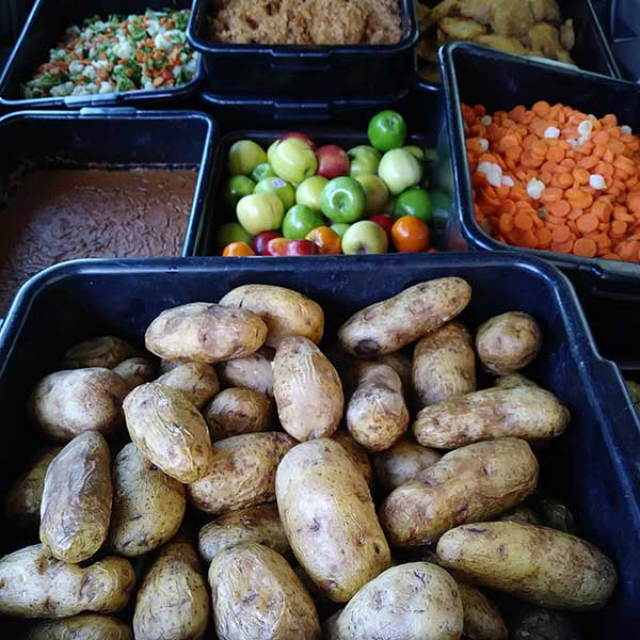General Guidelines
See our Packaging Guidelines for details on packaging requirements for specific food types.
- Unpackaged food that has been served to a consumer or that has been in possession of a consumer cannot be rescued.
- Food that has been placed into a customer self-serve operation (such as a buffet line) is a poor rescue candidate, especially if the food is not under constant monitoring by restaurant
staff. The concerns are potential contamination by consumers and/or temperature abuse of potentially hazardous food. - Potentially hazardous food cannot be rescued if at any time it was stored at room temperature under time control in lieu of temperature control.
- Refrigerating food does not kill germs. If potentially hazardous food has been temperature abused, placing it into a refrigerator will not undo any bacterial growth or remove any contamination. Temperature abused food must be discarded.
- Potentially hazardous food that is to be donated must be treated the same as a leftover that would be served to paying customers:
- If hot, it must be properly cooled and stored under refrigeration or frozen
- If cold, it must be kept at proper cold-holding temperatures or frozen
- Potentially hazardous food for donation must not be left at room temperature while awaiting pick-up.
- All food that is to be donated must be prepared, handled, and stored using the same food safety principles that are used for paying customers. The recipients of the food may be more susceptible to foodborne illness due to their circumstances.
Definitions
Potentially Hazardous Food
A food that must be kept at certain temperatures to slow the growth of harmful bacteria. Potentially hazardous foods are often involved in foodborne illness outbreaks. They are usually, moist, high in protein, and have a neutral or slightly acidic pH. Examples include:
- meat, poultry and fish – whether cooked or raw
- cooked foods from plants: potatoes, vegetables, pasta, rice, beans
- cut leafy greens, cut tomatoes, cut melons
Temperature Abuse
Storage of potentially hazardous food in the temperature danger zone (above 41 F and below 135 F) for enough time to allow growth of harmful bacteria.
Common Questions

